Think about the last time you got a prescription. Your doctor didn’t pull out a pad, hand you a scrawled-out note, and then send you off to a pharmacy. Instead, the doctor typed it up, printed and emailed you a copy, and sent it off to the pharmacy electronically on your behalf. Then the pharmacy called or texted you to let you know it was ready.
This is an example of how simple communication technology can help patients receive better, more timely medical care. It’s been around for years, but now that patients and providers see the value, they will most likely never go back to the old way of doing things. It would be too inconvenient and inefficient.
Now let’s take it a step further. Today, healthcare providers are rapidly adopting telehealth technology as a primary method for providing healthcare to patients. These technologies and techniques are rapidly evolving. How can seemingly hands-on fields like dentistry start to embrace telehealth practices? And why is this more important than ever? Let’s find out.
Why teledentistry matters and why more practices should adopt it
“Teledentistry is the use of electronic information, imaging and communication technologies, including interactive audio, video, data communications as well as store and forward technologies, to provide and support dental care delivery, diagnosis, consultation, treatment, transfer of dental information and education.”—American Teledentistry Association
The business world has changed expectations for all consumers (including your patients). Remember when pizza places and sandwich shops were the only restaurants that would deliver food? Customers now expect every restaurant to offer delivery through one of the many delivery services available. But customers didn’t set this expectation. Delivery startups did, and restaurants have had to adjust to it.
Businesses will continue to use technology to more efficiently and conveniently deliver services to their customers. People now expect healthcare services to do the same. This is why it’s so critical to understand how teledentistry can fit into your own practice — because you need to respond to your patients’ changing expectations.
It’s not just about meeting expectations, though. There are many practical reasons driving the adoption of teledentistry. Let’s look at a few.
Teledentistry has been shown to improve the dental health of patients. The frequency of dental visits has been steadily dropping over the past two decades. This has had a detrimental effect on the dental health of patients.
Teledentistry makes it more convenient for patients to have regular conversations with their dental care providers. Regular communication creates an environment where the provider is more aware of the patient’s concerns and the patient receives clear direction on a consistent basis. The result is more effective preventive care.
It saves patients time and money. The ultimate goal of healthcare may be to support the well-being of the patient, but there are secondary goals you must consider — for example, the value that the patient receives.
A healthcare provider who cares about value for patients may discourage them from a treatment plan that is costly or time-consuming if they know there’s a more affordable or faster option. Similarly, teledentistry can give patients more value for their money — when the dental practice does it correctly.
It can help you operate more efficiently. Teledentistry can help you create efficiency in several key ways. First, it reduces your team’s workload. It shortens patient intake time, saves a chair in the waiting room, and doesn’t require staff to set up and sanitize a room and tools for each patient.
This can save your practice time and money. In addition, by reducing the number of in-office appointments you have each day, you’ll open up more times for patients who have a need that the dental team can only address in the office.
It makes dental care more accessible. According to the Rural Health Information Hub, many barriers prevent members of rural communities from receiving adequate dental care. These can include a lack of transportation and childcare, poverty, a limited number of practices that accept Medicaid, and a limited number of providers for a given population. ü
Teledentistry can eliminate all of these barriers to care to some degree, thus creating better outcomes for the most vulnerable portions of the population.
It can deliver the same quality of care and outcomes when done correctly. This, perhaps, is the most important reason to consider teledentistry. When a dental services provider uses teledentistry with the right patients to solve the right problems, it can be as effective as an in-office visit. If it can work just as well and deliver more value to patients, why wouldn’t you consider it?
Teledentistry can completely change how you care for your patients and bring a host of other benefits. But many providers still haven’t adopted teledentistry because they don’t know where to start. Let’s look at how teledentistry works so that you can decide what it will take to embrace this new way of working.
How does teledentistry work?
J. Cook first defined the term “teledentistry” in 1997 as “the practice of using video-conferencing technologies to diagnose and provide advice about treatment over a distance.”
The concept of teledentistry has been around for a surprisingly long time (since about 1989). It started as an idea for applying informatics (computing) to dental care to improve patient outcomes. Perhaps even more surprisingly, the United States Army undertook the first true application of teledentistry in 1994.
The findings from the Total Dental Access Project spotlighted the value of teledentistry. It found that “teledentistry reduced total patient care costs, extending dental care to distant and rural areas and offering complete information required for deeper analysis.” Since then, a number of individual practices, large healthcare systems, and private companies have started to offer teledentistry services.
The question is, how does teledentistry actually work?
Teledentistry uses two primary approaches. In addition, it may employ two secondary methods or approaches. Let’s start by looking at the two primary approaches.
Real-time consultations
This method is simple and easy for patients and providers to understand. In the real-time consultation method, you schedule appointments with your patients just like you normally would, but instead of having them come into the office, you both join a video call.
The video component can help both of you feel more comfortable as you ask questions to understand your patient’s concerns. It will also allow you to demonstrate — through gestures, models, or images — whatever information you need to convey.
You may also require the patient to perform a self-diagnostic — either by showing you problem areas or making a dental cast — or have a local healthcare provider take x-rays or intraoral images. For example, certain orthodontic services may schedule a real-time consultation with a prospective patient after receiving a homemade cast of their teeth.
The real-time consultation method allows you to do everything you would normally do in the office — except work directly on the patient. This makes it practical to diagnose a patient, follow up on care, or prescribe at-home treatment regimes that the patient can follow themselves. You may even decide that the patient should come into the office to receive specific treatment.
Store-and-forward method
This method is a bit more specialized than a real-time consultation, but it’s extremely effective for ongoing monitoring and for cases that require the involvement of specialists. It works just like an email inbox. Patients and their providers can send messages, clinical information, and medical images back and forth as needed. The provider can then use the stored data to consult with other specialists.
The store-and-forward method is an excellent tool for working with rural patients since it allows a local dental hygienist to perform in-person tasks while a remote dentist, orthodontist, or other specialist monitors progress. Based on the information that the patient or hygienist sends, the remote provider will be able to prescribe treatment plans that the hygienist can provide locally. This can give rural patients and other at-risk populations a much higher quality of care than they would otherwise receive.
Other secondary approaches
While real-time consultations and the store-and-forward method are the two primary approaches for teledentistry, there are other approaches that will continue to increase in popularity. These are mainly designed to fill in gaps in care between visits with a provider, hygienist, or other medical professional. This makes them a valuable tool for patients who primarily receive their care through teledentistry, in addition to patients who normally go into the office but may require extra attention between visits.
One of these secondary approaches is remote monitoring, which is commonly used in other areas of telehealth, such as when a doctor remotely monitors the blood sugar and insulin doses of diabetic patients. The basic premise of remote monitoring is that the patient uses an at-home medical device to track a specific diagnosis, completes routine at-home care, or follows a treatment plan. The healthcare provider then gets the results from this device, either automatically over the internet or manually from the patient via email or another communication method.
This approach is still relatively new but appears to be gaining traction. For example, Grin is a remote-monitoring platform that allows orthodontists to monitor their patients’ progress and identify issues. The development of these medical devices makes remote monitoring an excellent option for supporting patients at a more detailed level without the time commitment of ongoing appointments.
Another secondary approach that’s critical to successful patient outcomes is education. Helping patients understand the what, why, and how of basic dental hygiene; a specific course of treatment; or a diagnosis can help them take better care of themselves. In rural communities, this can be especially effective since a patient who is a parent, for example, can pass on this information to their family.
When approaching education as a teledentistry method, it’s important to use formats that are accessible to your patients. For example, your educational content should be in a digital format so you can share it with your patients and they can access it quickly. People with disabilities should also be able to access it, and it should be relevant to a patient’s needs. This will ensure that your patients are interested in and able to benefit from any material you provide them.
Following up is a critical step
As with any other type of healthcare, follow-ups help ensure patients are taking their prescriptions and putting at-home care recommendations into practice. In certain teledentistry settings, this can be even more critical since the patient may not receive any in-office care.
If possible, create a few ways to follow up with your patients, such as by email, text message, or phone. In the case of email or text messages, you can use automation tools to automatically follow up with a patient and see if they have any lingering questions or concerns. It’s usually best to schedule a phone call. This will increase the likelihood of catching the patient when they’re actually able to talk.
Preparing your practice to offer teledentistry
Now that you have an overview of what teledentistry includes, you’ve probably realized that you’re already doing a bit of teledentistry, whether it’s conducting quick phone consultations or emailing results and treatment plans to patients.
But what if you want to embrace teledentistry more fully? What regulations will you need to comply with? What changes will you need to make to your practice?
Know your state’s regulations on teledentistry
Teledentistry is an evolving field. State laws and regulations are evolving right along with it. According to Mouthwatch, as of October 2020, teledentistry regulations exist in only 17 of the 50 states. It’s important to know whether your state has any regulations before pursuing teledentistry.
For example, some states limit the number of dental hygienists or assistants who can participate in teledentistry at your practice. Others have specific requirements for the expanded functions that a dental hygienist or assistant can or can’t perform. Still others, such as New Mexico, may restrict how you make diagnoses via teledentistry.
Even if your state has no teledentistry regulations, it’s still important to know what other states have enacted and whether those regulations could apply when you treat a patient who is traveling. This knowledge can also help you plan ahead when building your teledentistry practice. Knowing the most common restrictions and regulations could help you plan for anything that your state may enact in the future so that these new regulations come as less of a surprise.
In addition to state regulations, you should also consider any professional organizations that you are a member of. Have they taken a stance on teledentistry? If so, is there guidance that they expect you to follow? For example, the ADA has developed an extensive position on teledentistry. Following these carefully formulated guidelines won’t just protect you — it will also protect your patients.
Set up your digital and physical spaces for teledentistry
When you begin shifting to teledentistry, it’s important to remember that it will expose your patients’ protected health information (PHI) to new risks. For example, you may need to use cloud-based technologies to store and send files. It’s important to know whether these services are HIPAA-friendly out of the box or if you need a BAA to make them HIPAA-friendly.
You’ll also need to identify the right videoconferencing service. There are many services available, and everyone has services that they feel more comfortable with, but not all of them meet HIPAA requirements.
First, you need to use a service that’s nonpublic facing, meaning that the general public can’t access it. Next, ensure that there are ways to limit who can access the call — through passcodes, logins, or individual user accounts — and that the service uses end-to-end encryption. Finally, it’s important that the patient can mute the call, mute themselves, and control the use of their device’s camera.
You may need to remodel or repurpose areas of your office to help with HIPAA as well. In a recent FAQ on telehealth, the HHS stated that “Providers should always use private locations and patients should not receive telehealth services in public or semi-public settings, absent patient consent or exigent circumstances.”
Converting a traditional exam room into a teledentistry office can help your staff keep up with the increased number of teledentistry patients. However, it’s important that you’re able to close these rooms off from adjoining hallways so that no one can see the provider’s screen or overhear their conversation.
Finally, consider whether or not you will allow your employees to work from home. Teledentistry makes this a possibility, but there are a number of risks inherent with this option. Remember that an employee’s home office is an extension of your practice, so ensure that they have sufficient knowledge to stay HIPAA-friendly. Also, consider having regular check-ins to ensure that no new risks to your patients’ PHI have cropped up.
By taking these steps, you’ll be able to fully embrace teledentistry without increasing the risk of breaches. Being proactive and over-delivering on current requirements could also help you protect your practice from any future restrictions or guidelines that your state may enforce.
Embracing teledentistry sets you and your patients up for the future
At the end of the day, your patients are consumers of your services. It’s your responsibility to know your patients, their challenges and desires, and how different ways of providing them with the care they need will benefit them. Teledentistry gives you a framework for providing care that aligns with patient expectations and allows you to achieve better patient outcomes. It’s a win-win.
As you consider how to implement teledentistry, remember to answer these key questions:
- Will teledentistry benefit your current set of patients or allow you to support new groups of patients?
- What method of teledentistry should you start with? Will it be necessary to adopt multiple methods to provide the same level of care?
- What requirements do your state and/or professional associations place on teledentistry?
- What equipment, software, and changes to your office will you need to implement for teledentistry?
- How will you ensure that you help with HIPAA requirements?
Answering these questions now will help you to create a strong plan for your practice. As you choose software, consider how patients can share essential data through forms. Jotform offers HIPAA-friendly forms that can complement your new teledentistry practice and help you operate even more efficiently.






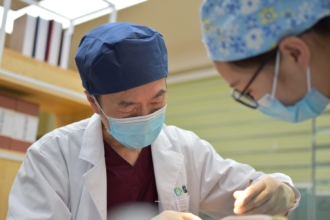

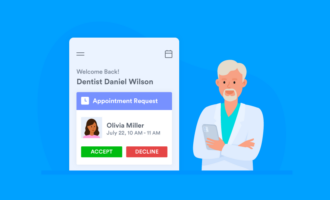
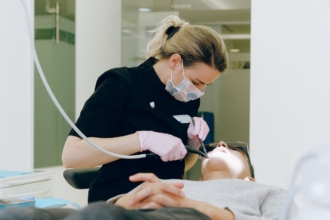
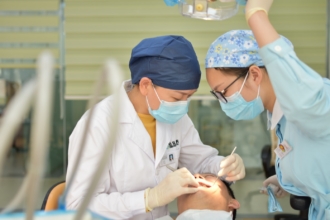
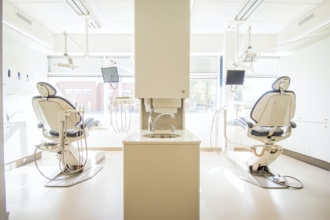
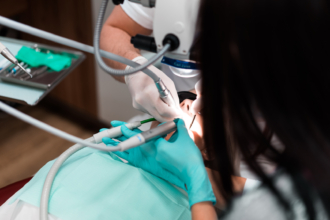
Send Comment: